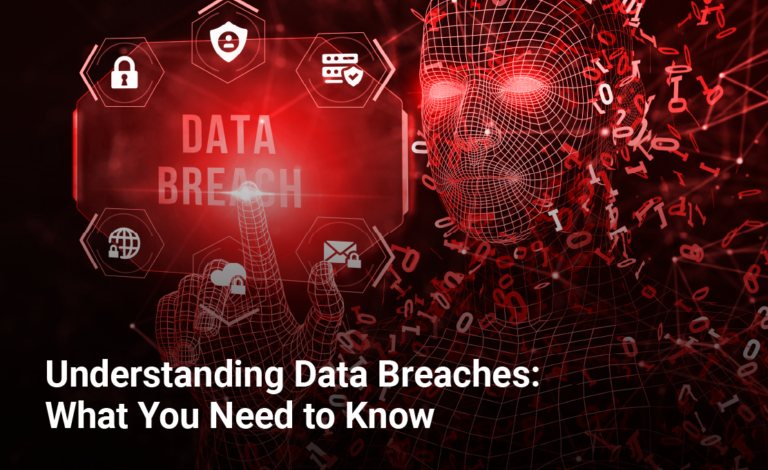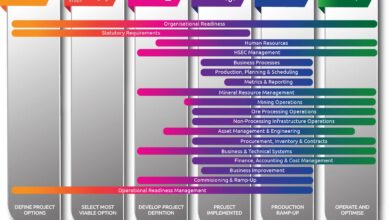Understanding Data Breaches, Their Impact, and How to Respond to Them

Data breaches have become an increasingly prevalent and severe threat in today’s digital landscape. As businesses rely more heavily on digital systems and data storage, the risk of unauthorized access, theft, or exposure of sensitive information escalates. A data breach can have far-reaching consequences, ranging from financial losses and legal liabilities to reputational damage and loss of customer trust.
The impact of a data breach can be devastating for organizations of all sizes. Compromised data may include sensitive information such as customer records, financial data, intellectual property, or confidential business strategies. The consequences can manifest in various forms:
Financial losses: Data breaches often result in substantial financial losses due to regulatory fines, legal fees, remediation costs, and potential lawsuits from affected individuals or entities.
Reputational damage: A data breach can severely tarnish a company’s reputation, leading to a loss of customer trust, negative publicity, and a diminished market position.
Legal and regulatory consequences: Organizations may face legal action from regulatory bodies or affected individuals, resulting in hefty fines, penalties, or even criminal charges in severe cases.
Operational disruptions: Data breaches can disrupt normal business operations, leading to productivity losses, system downtime, and operational inefficiencies.
Recognizing the significant impact of data breaches is crucial for organizations to prioritize robust cybersecurity measures and effective incident response plans.
Best Practices for Recovering from a Data Breach
In the event of a data breach, swift and effective action is paramount to mitigate the damage and restore trust. Here are some best practices for recovering from a data breach:
Activate your incident response plan: Implement your pre-established incident response plan, which should outline the steps to be taken, roles and responsibilities, and communication protocols.
Contain the breach: Identify the source of the breach and take immediate steps to contain it. This may involve isolating affected systems, changing credentials, or implementing temporary security measures.
Assess the scope and impact: Conduct a thorough investigation to determine the nature and extent of the breach, including the types of data compromised, the number of affected individuals or entities, and the potential consequences.
Notify relevant parties: Depending on the nature and severity of the breach, you may be legally required to notify affected individuals, regulatory authorities, law enforcement, or other stakeholders within a specified timeframe.
Implement remediation measures: Based on the findings of your investigation, implement appropriate remediation measures to address vulnerabilities, strengthen security controls, and prevent similar incidents from occurring in the future.
Provide support and resources: Offer support and resources to affected individuals, such as credit monitoring services, identity theft protection, or counseling services, to help mitigate the potential impact of the breach.
Communicate transparently: Maintain open and transparent communication with affected parties, stakeholders, and the public. Provide regular updates on the situation, the steps to address the breach, and the measures implemented to prevent future occurrences.
Review and update policies and procedures: Conduct a comprehensive review of your organization’s security policies, procedures, and incident response plans. Update them as necessary to address any identified gaps or weaknesses.
Best Practices for Preventing Data Breaches
While recovering from a data breach is crucial, implementing proactive measures to prevent such incidents from occurring in the first place is equally important. Here are some best practices for preventing data breaches:
Implement strong access controls: Establish robust access controls, including multi-factor authentication, role-based access privileges, and regular password updates, to prevent unauthorized access to sensitive data.
Encrypt sensitive data: Implement encryption protocols for data at rest and in transit, ensuring that even if data is compromised, it remains unreadable and unusable to unauthorized parties.
Regularly update and patch systems: Stay vigilant about applying security updates and patches to all systems, applications, and software to address known vulnerabilities and reduce the risk of exploitation.
Conduct regular security assessments: Regularly assess your organization’s security posture by performing vulnerability scans, penetration testing, and security audits to identify and address potential weaknesses.
Implement robust backup and disaster recovery strategies: Maintain regular backups of critical data and systems and establish comprehensive disaster recovery plans to ensure business continuity during a breach or other disruptive incident.
Foster a culture of security awareness: Educate and train employees on cybersecurity best practices, including recognizing and reporting suspicious activities, handling sensitive data securely, and adhering to security policies and procedures.
Implement data loss prevention (DLP) solutions: Deploy DLP solutions to monitor and control the movement of sensitive data, preventing unauthorized access, transmission, or exfiltration.
Establish incident response and communication plans: Develop and regularly review incident response and communication plans to ensure a coordinated and effective response in the event of a data breach or other security incident.
Implementing Mobile Device Management in Companies
In today’s mobile-centric business environment, the proliferation of mobile devices, such as smartphones and tablets, has introduced new challenges for data security. Mobile devices often store or access sensitive information, making them potential targets for cyber threats. To address these risks, implementing mobile device management in companies has become a critical best practice.
MDM solutions provide centralized management and control over mobile devices used within an organization. They offer a range of capabilities to secure and manage these devices, including:
Device enrollment and provisioning: MDM solutions allow organizations to enroll and provision mobile devices securely, ensuring that only authorized devices can access corporate resources.
Policy enforcement: MDM solutions enable administrators to enforce security policies on mobile devices, such as requiring strong passwords, encrypting data, and restricting access to specific applications or features.
Remote management and monitoring: MDM solutions provide remote management capabilities, allowing administrators to monitor device usage, update software, and remotely lock or wipe devices in case of loss or theft.
Application management: MDM solutions can manage and distribute approved applications to mobile devices, ensuring that only authorized and secure applications are used for business purposes.
Content management: MDM solutions can secure and manage access to corporate data and documents on mobile devices, preventing unauthorized access or data leakage.
Geo-fencing and location tracking: Some MDM solutions offer geo-fencing and location-tracking capabilities, allowing organizations to enforce location-based policies and track device locations for security purposes.
Conclusion: The Ongoing Importance of Data Breach Response and Prevention
In today’s digital age, data breaches have become a significant risk for organizations of all sizes and industries. The consequences of a data breach can be far-reaching, impacting finances, reputation, legal compliance, and customer trust. As such, it is imperative for organizations to prioritize both effective data breach response and proactive prevention measures.
By following best practices for recovering from a data breach, such as activating incident response plans, containing the breach, assessing the scope and impact, notifying relevant parties, implementing remediation measures, providing support and resources, communicating transparently, and reviewing and updating policies and procedures, organizations can mitigate the damage and restore trust.
However, prevention is equally crucial. Implementing strong access controls, encrypting sensitive data, regularly updating and patching systems, conducting security assessments, fostering a culture of security awareness, implementing data loss prevention solutions, and establishing incident response and communication plans can significantly reduce the risk of data breaches.
Additionally, implementing mobile device management solutions and prioritizing comprehensive employee training on data security and prevention are essential components of a robust cybersecurity strategy. These measures address the human element of data security, empowering employees to recognize and respond to potential threats effectively.
Regularly reviewing and updating security measures is also vital in the ever-evolving landscape of cybersecurity threats. By conducting risk assessments, staying informed about emerging threats, updating policies and procedures, implementing security patches and updates, evaluating and upgrading security technologies, providing security awareness training, testing and validating security controls, and collaborating with security experts, organizations can maintain a strong security posture and stay ahead of emerging risks.
To protect your organization from the devastating consequences of data breaches, it is crucial to prioritize both effective incident response and proactive prevention measures. By implementing the best practices outlined in this article, you can enhance your organization’s cybersecurity posture, mitigate risks, and maintain the trust of your customers and stakeholders.
In conclusion, the ongoing importance of data breach response and prevention cannot be overstated. By adopting a comprehensive and proactive approach, organizations can safeguard their sensitive data, maintain business continuity, and foster a culture of trust and security.



